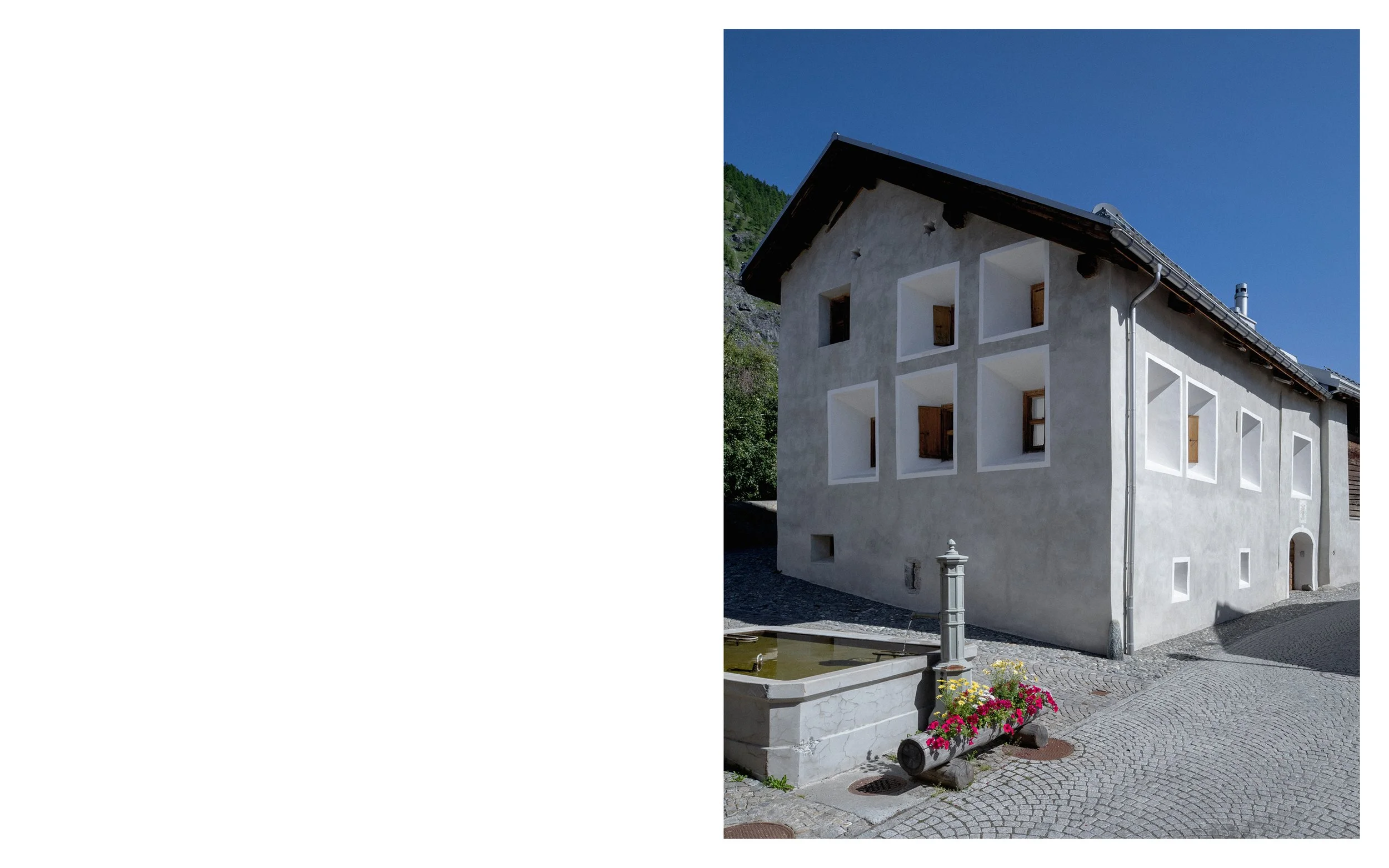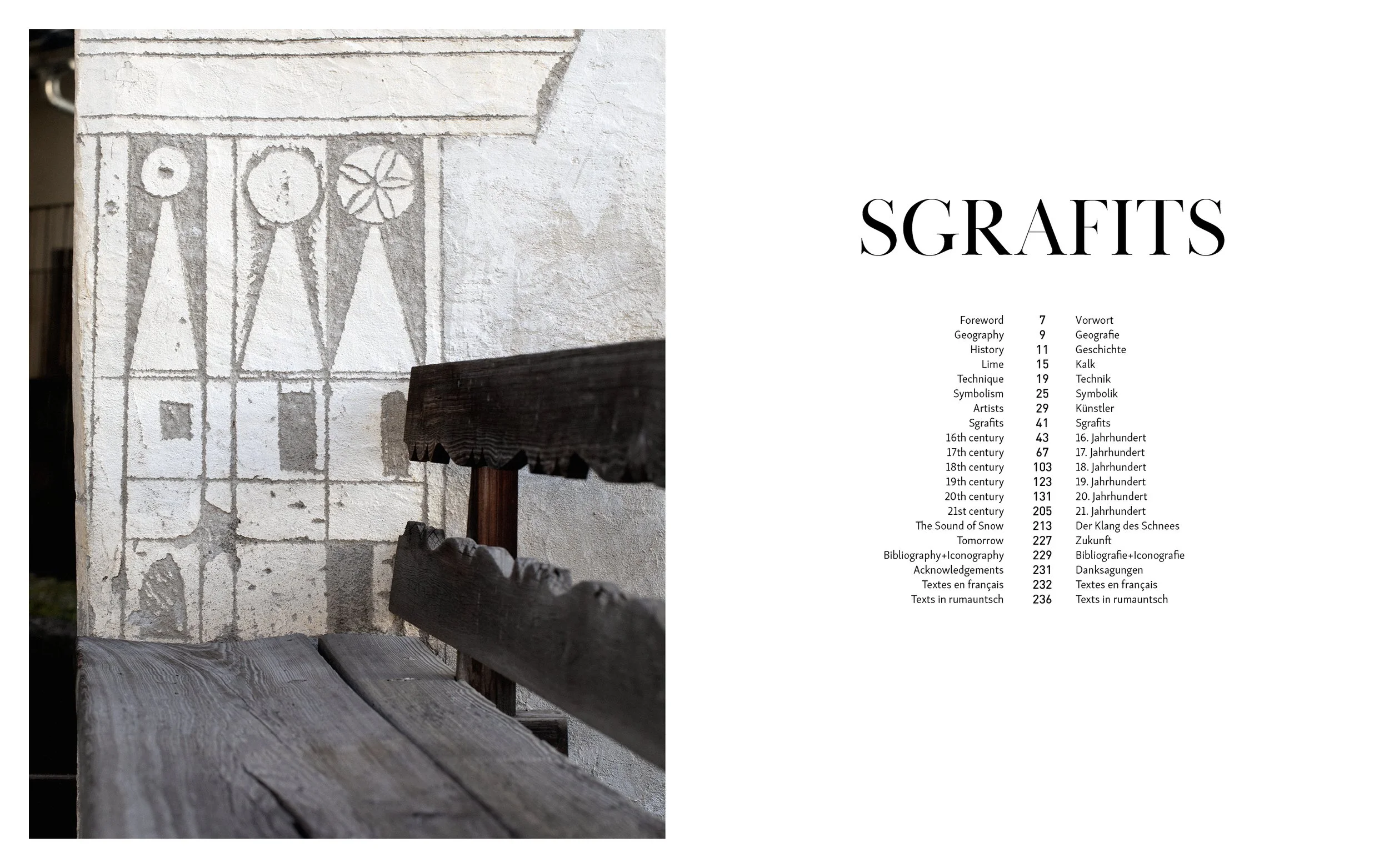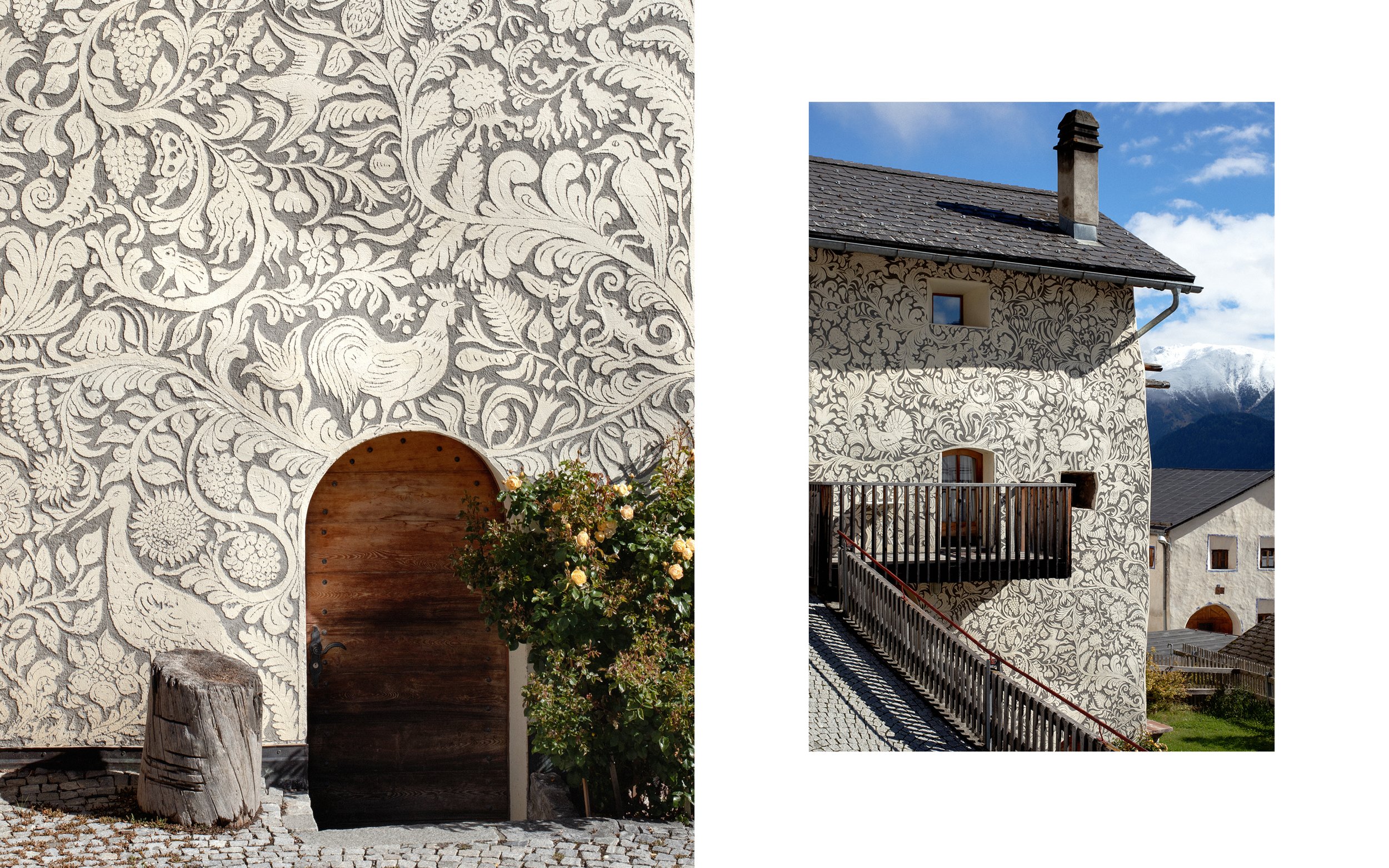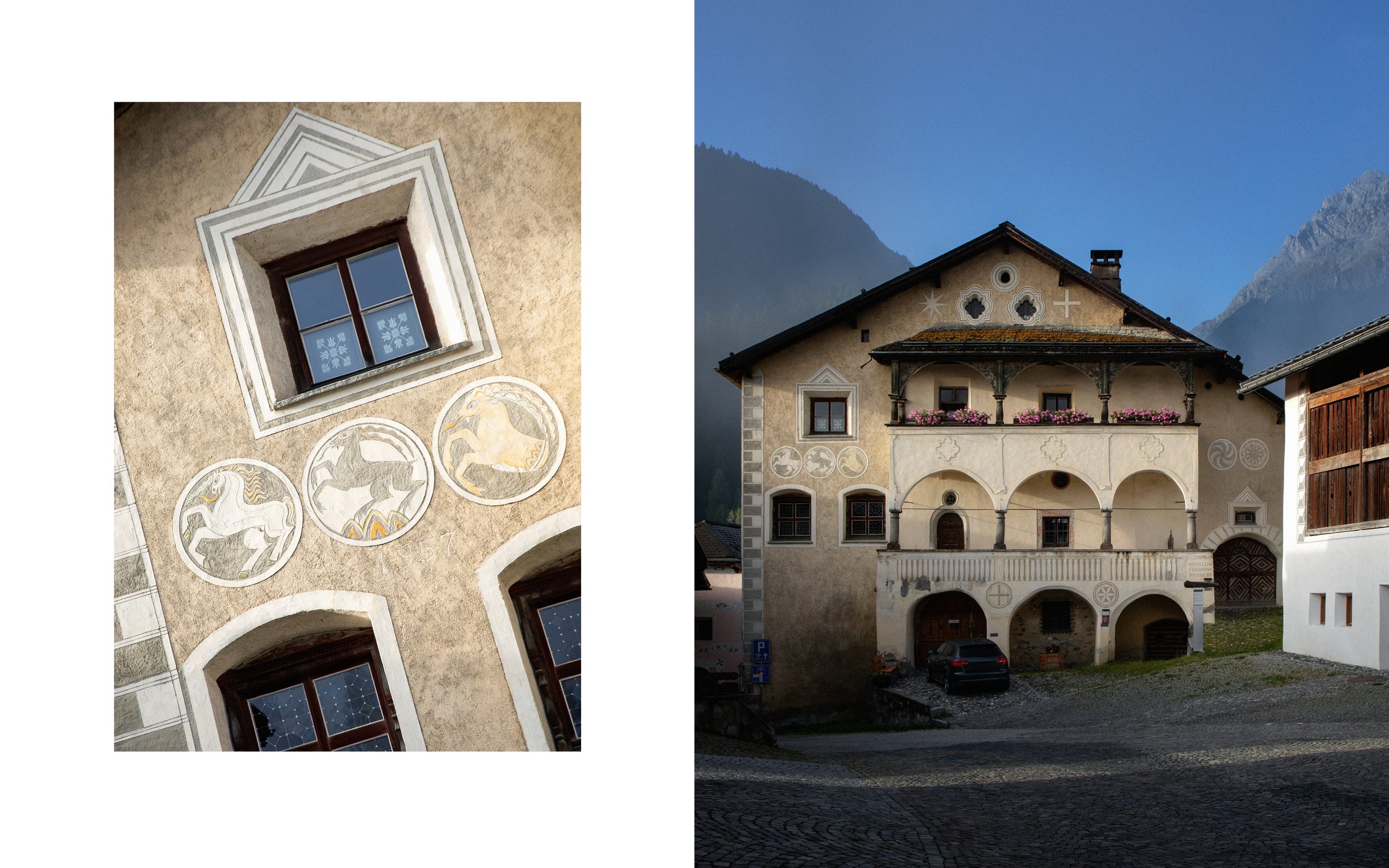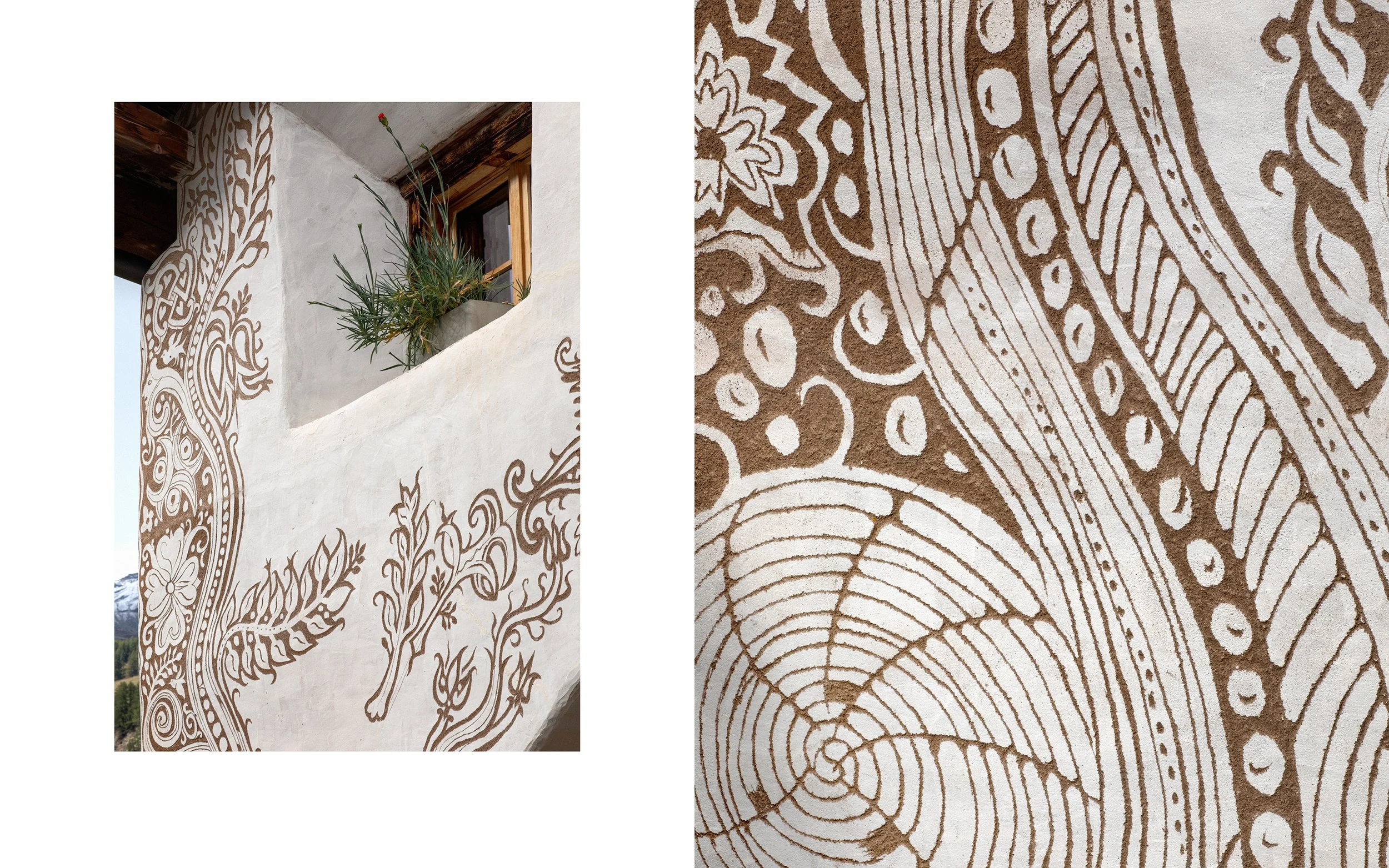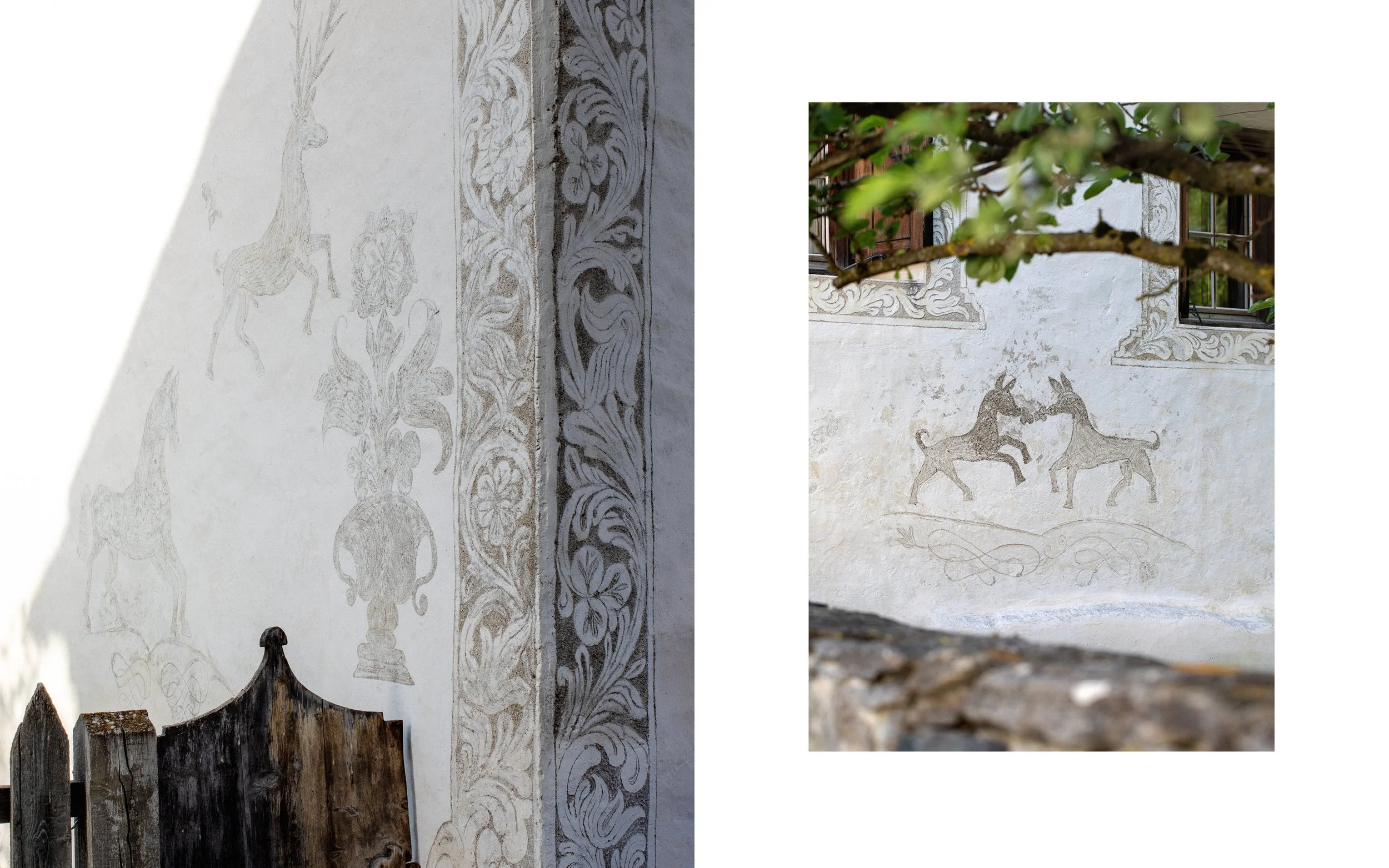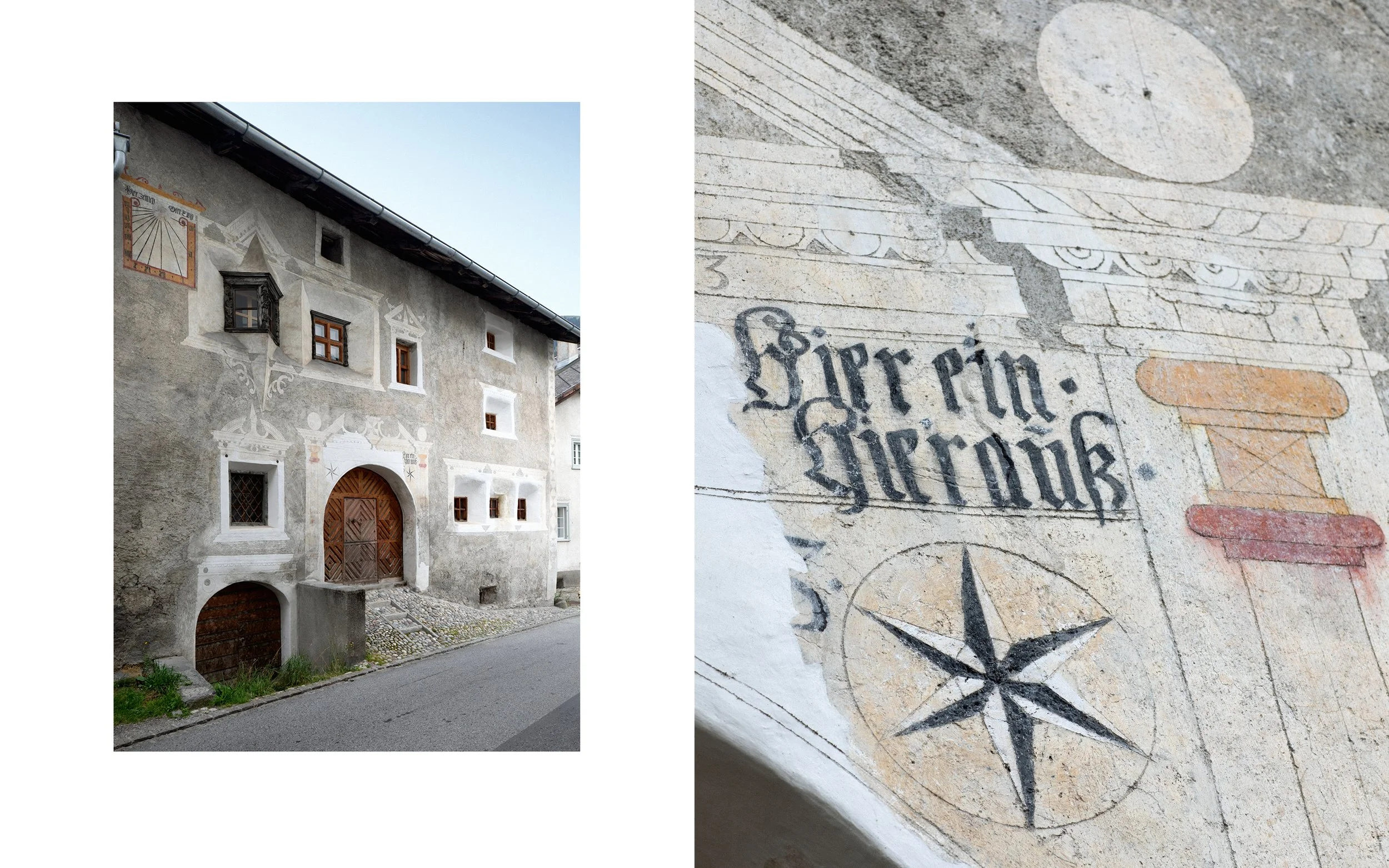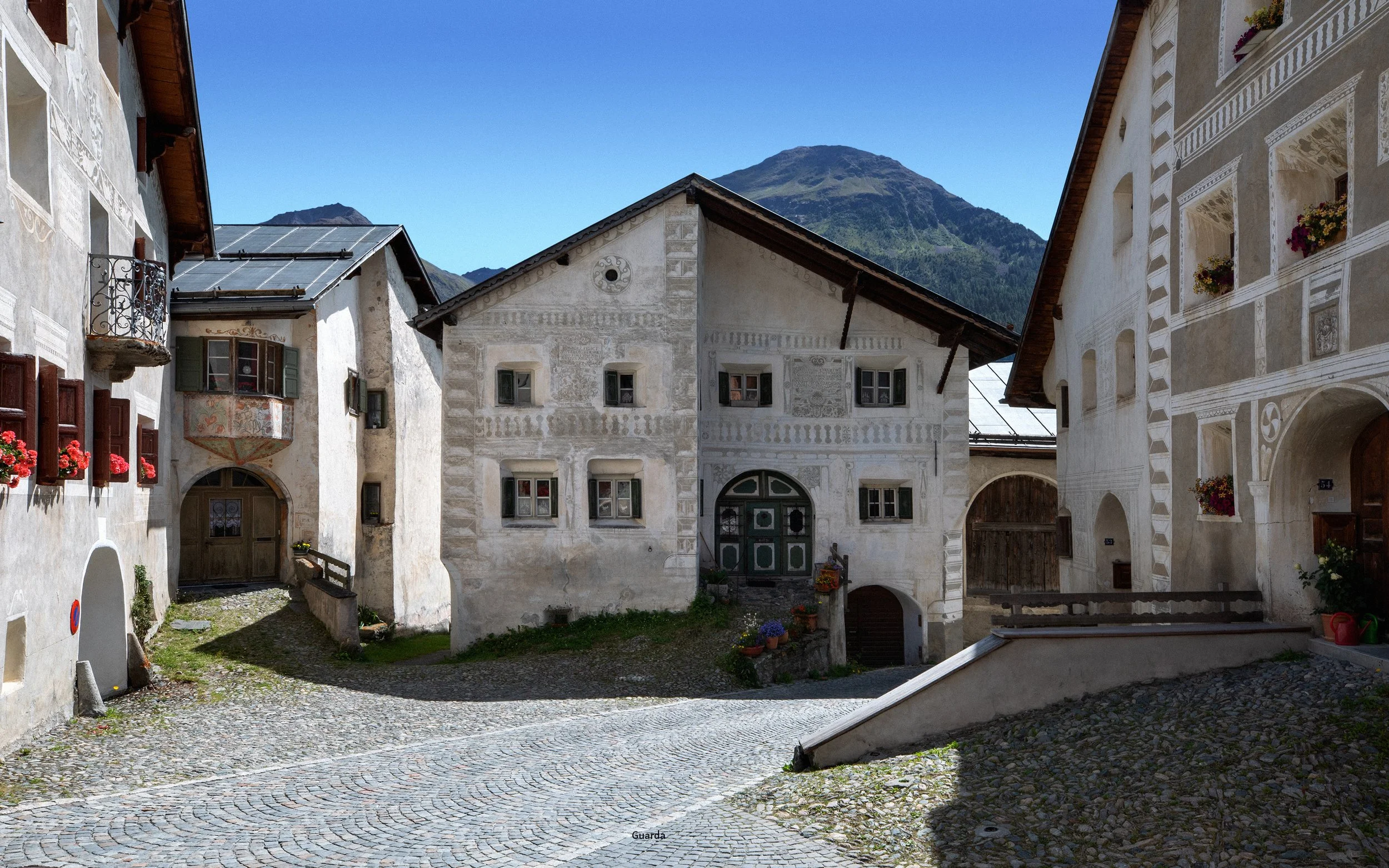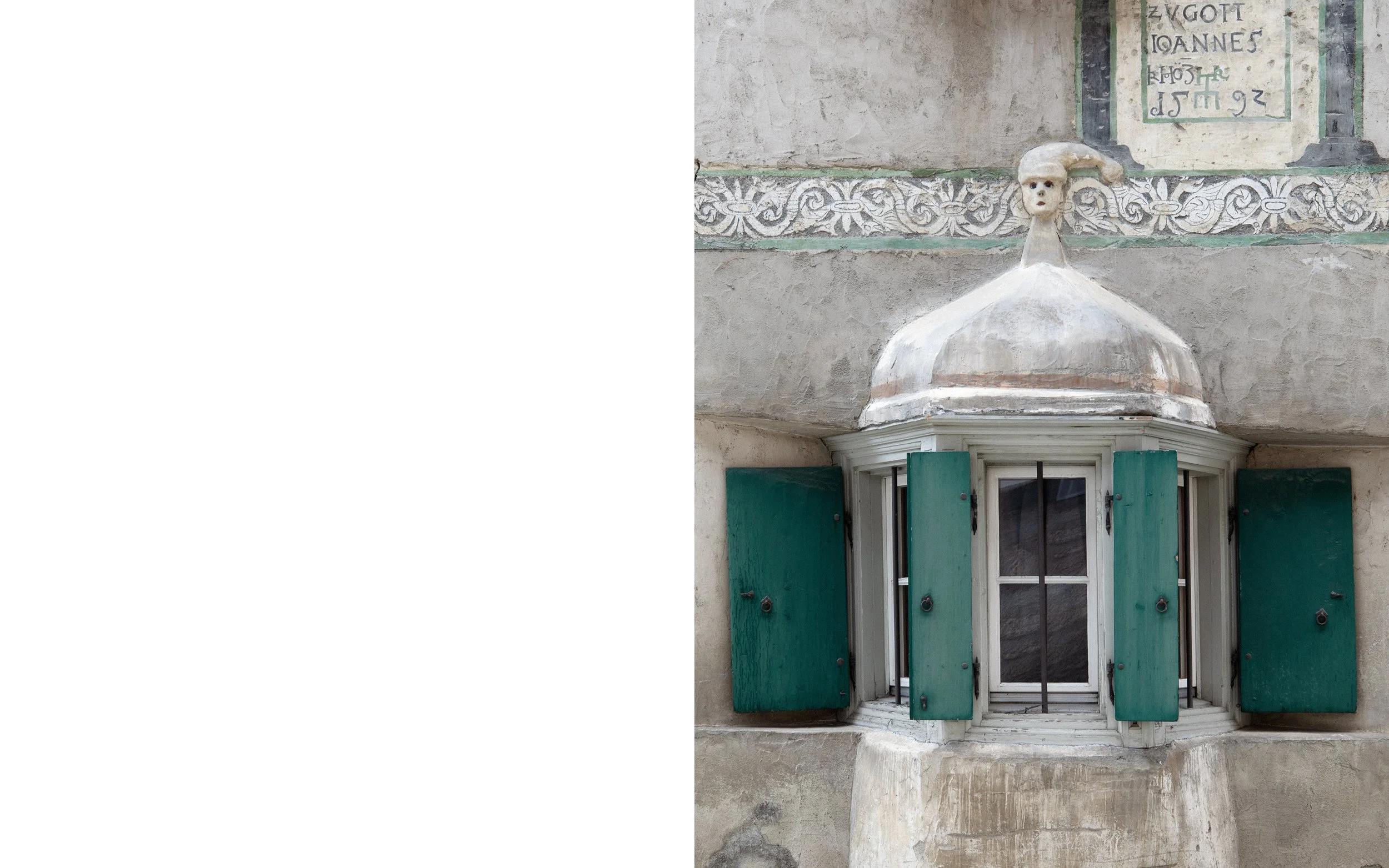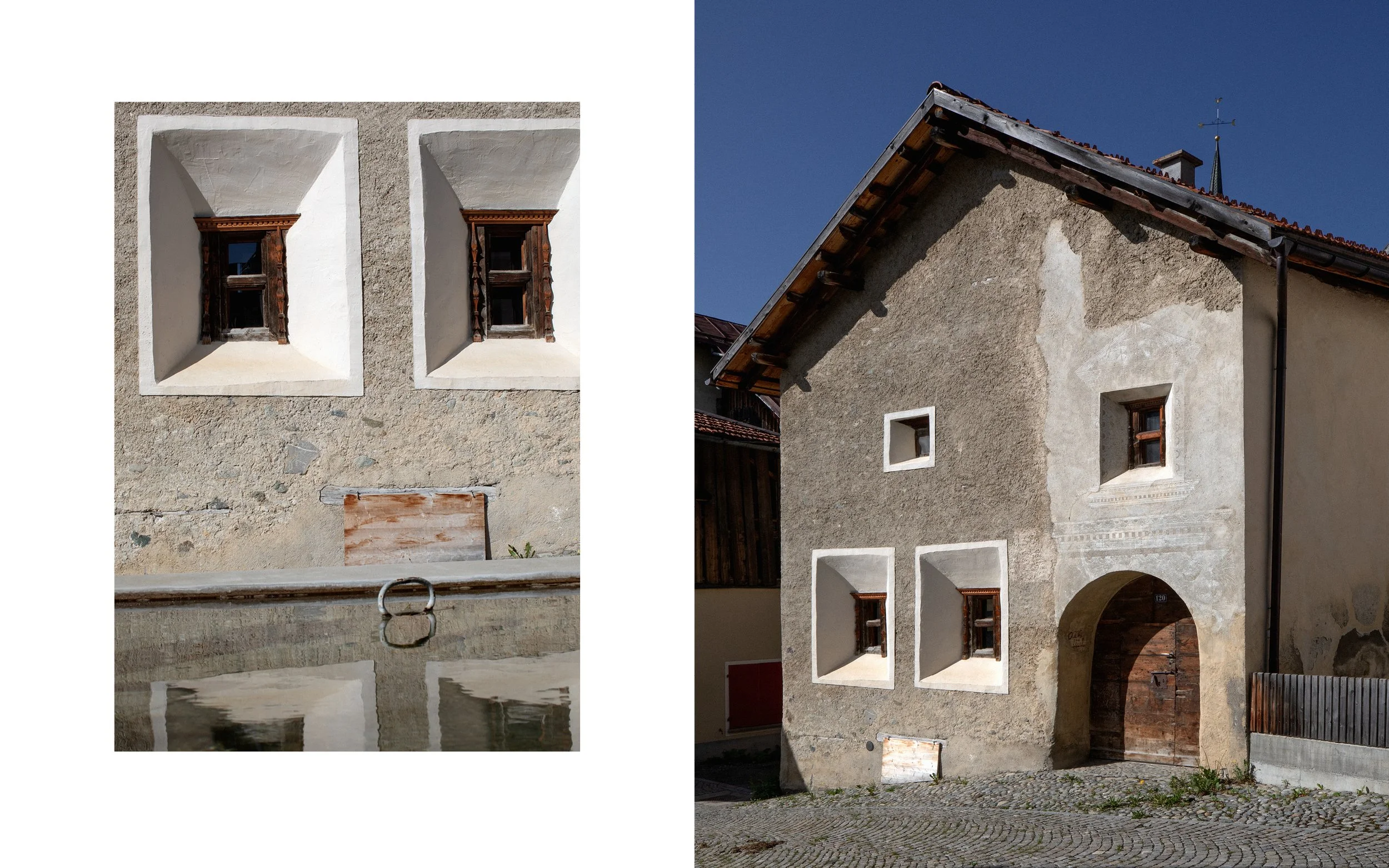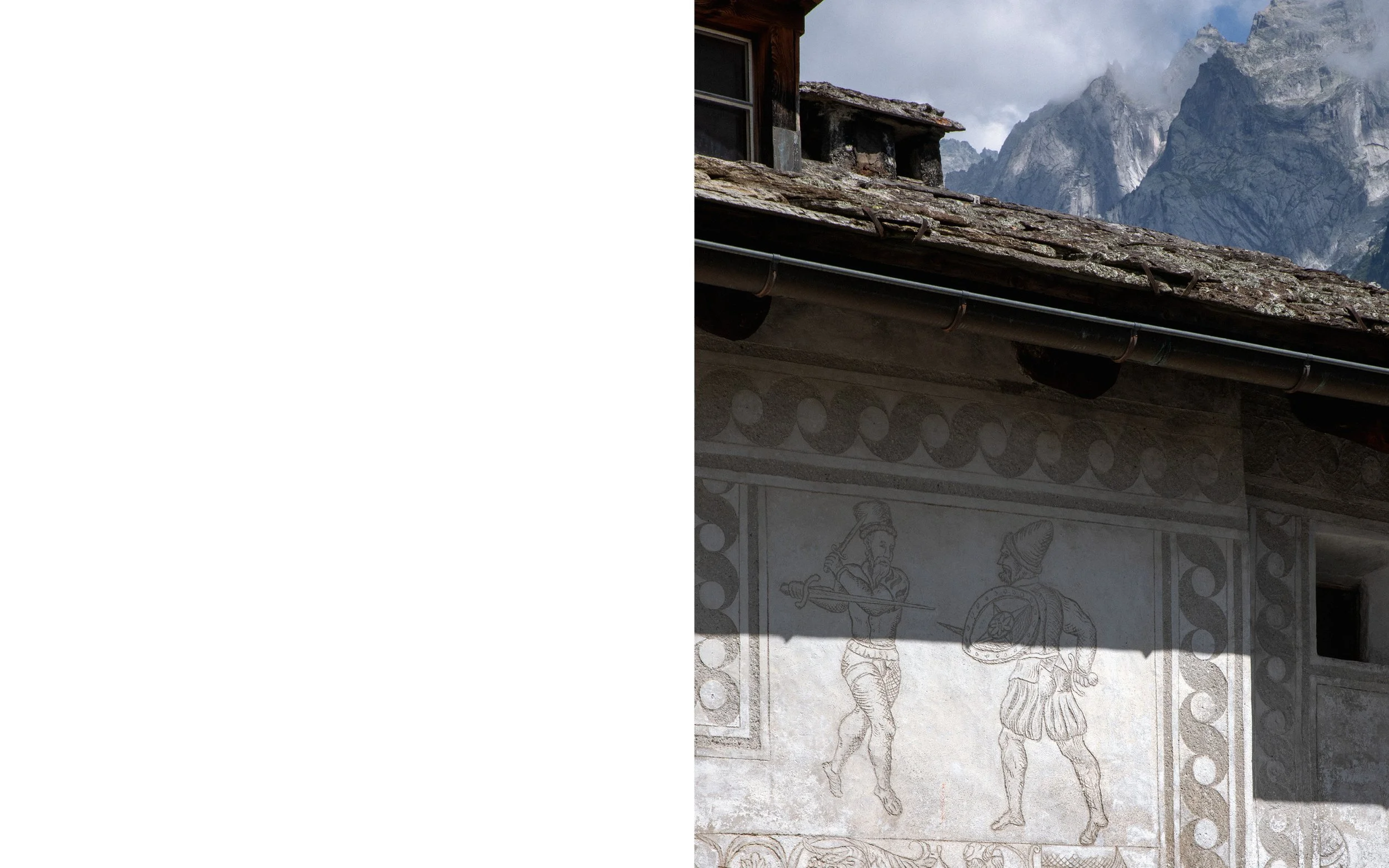The Art
of Illusion
sgraffito comes from Italian and is derived from graffiare ("to scratch"), ultimately from Greek γράφειν (gráphein, "to write"). The plural form is sgraffiti. In Romansh, it is called sgrafit.
〰️
sgraffito comes from Italian and is derived from graffiare ("to scratch"), ultimately from Greek γράφειν (gráphein, "to write"). The plural form is sgraffiti. In Romansh, it is called sgrafit. 〰️
Sgrafits - The art of illusion
A book about sgraffito in the Engadine and neighbouring valleys.
240 pages 25x30cm
Printed and bound (paperback) in Switzerland
ISBN 978-3-033-10143-2
Switzerland boasts an incredible diversity of landscapes, traditions and architecture. The Engadine and the surrounding valleys are proud representatives of this richness.
First-time visitors to the region are in awe of the immensity of the mountains and overwhelmed by their calm yet mesmerising energy. In the villages, the traditional houses give off the same impression—their quiet strength perfectly echoing the landscape. They have survived wars and fires to finally reach us, decorated with sgraffiti. For at least five centuries, Engadine families have enhanced the facades of their homes with great care, sometimes ostentatiously, often delicately, but always with a taste for beauty, modernity and sophistication, with the aim of embellishing their abode. The generosity of yesteryear continues to dazzle visitors.
I fell in love with this, at times, primitive or sophisticated art form. I visited every village, meeting many passionate and knowledgeable people. I spoke to the craftspeople who practise and embody this age-old art form. I am delighted to share my passion and my discoveries with you through these pages. This book is a transcription of what these walls and these people have passed onto me—stories that are passed down like legends through the generations.




